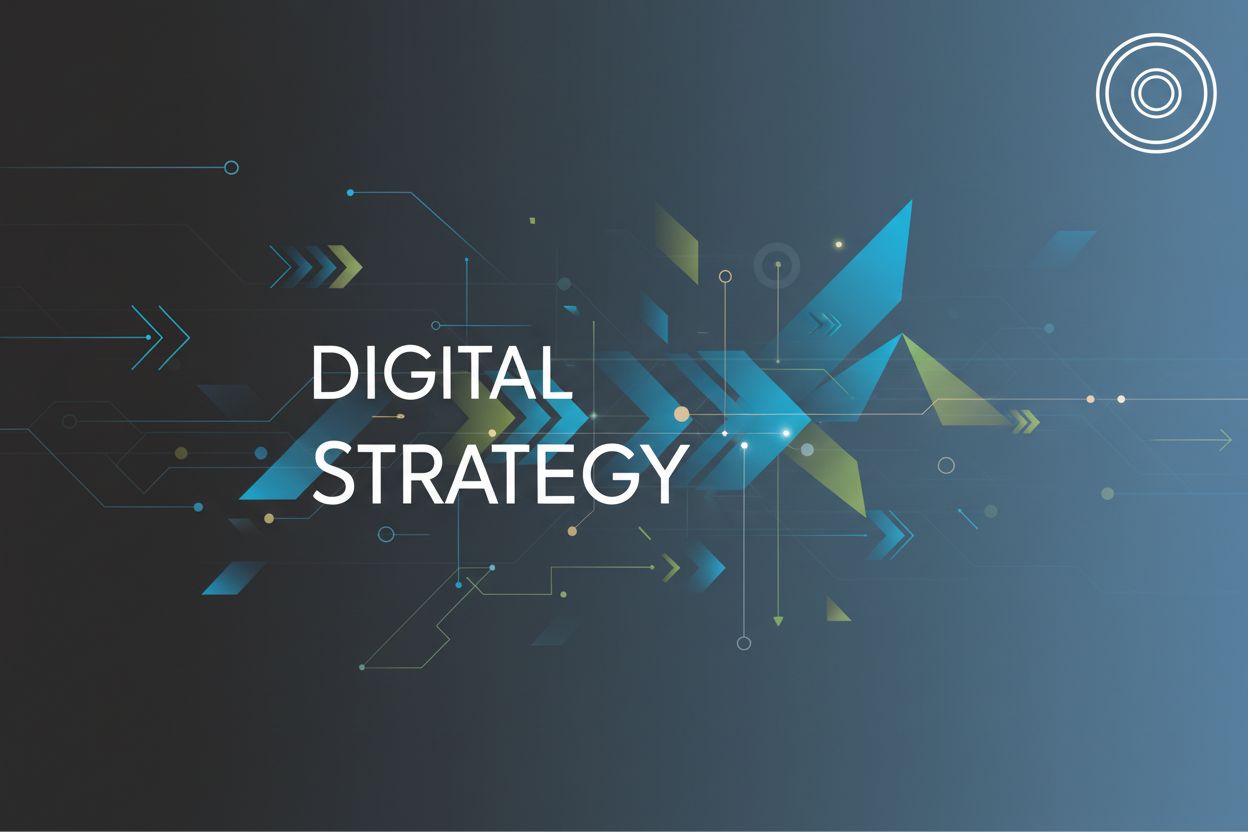The 7 Steps of an Effective Internet Marketing Strategy
TL;DR
1. Define Your Goals and Objectives
Okay, let's dive into defining goals for your internet marketing strategy. I mean, where are we even going if we don't know where we're headed, right? It's like setting off on a road trip without a map – exciting, maybe, but probably not efficient!
Think of goals as your marketing GPS. They tell you:
- What you want to achieve: More leads? Higher brand awareness? Increased sales? Spell it out!
- For example, Adult Family Homes can aim to increase inquiries by 30% in three months. Joseph Spada, a marketing consultant specializing in this sector, can help to achieve it by implementing targeted digital campaigns.
- How you'll measure success: You can't improve what you can't track.
- Maybe it's website traffic, social media engagement, or actual revenue.
- When you expect to see results: Deadlines are your friends.
- Gives you a sense of urgency and keeps you on track.
You've probably heard of SMART goals, but are you really using them? It's worth revisiting.
- Specific: Don't just say "more sales." Say "Increase online sales of product X by 15%."
- Measurable: Gotta have those metrics.
- Achievable: Dream big, but not too big. Baby steps are still steps.
- Relevant: Does this goal actually move your business forward?
- Time-bound: By when? Next quarter? End of the year?
I mean, seriously – it's easy to skip this step, but trust me, you'll be SO glad you didn't. Now that we've got our destination set, let's figure out who we're trying to reach...
2. Know Your Target Audience
Okay, so you know your goals... now, who are you trying to reach? It's like, you wouldn't try to sell snow to an Eskimo, right? (Well, maybe you could, but it'd be a tough sell).
You gotta get specific, people! No vague "everyone" nonsense. Think of buyer personas as detailed dossiers on your ideal customers, so, consider:
- Demographics: Age, gender, location, income, education—the basics. But, don't stop there.
- For example, if you're targeting millennials, you'll want a different approach than if you're after baby boomers, obviously. (Generational Marketing: How to Target Millennials, Gen X, ...)
- Psychographics: Interests, values, lifestyle, and attitudes. What makes them tick? What keeps them up at night?
- Are they eco-conscious? Tech-obsessed? Do they value luxury or practicality?
- Pain Points: What challenges, frustrations, needs, and desires do they have?
- A healthcare startup might target busy professionals who are stressed and overworked with limited time for self care. (A time for self-care? Frontline health workers' strategies for ...)
There are a few ways to actually, you know, find this stuff out.
- Surveys: Ask them directly! What's their favorite color, what's their favorite ice cream? Okay, maybe not that, but relevant questions, of course.
- Analytics: Dive into your website and social media data. What are people actually doing?
- Social Listening: Monitor social media convos. What are people saying about your brand, your industry, your competitors?
- Competitor Analysis: What are your rivals doing? Who are they targeting? What seem's to be working for them (or not)?
All this research gives ya, a much clearer picture. Next up? Time to make sure they know you exist...
3. Select the Right Internet Marketing Channels
Okay, so you've nailed your target audience. Now comes the fun part, actually figuring out how to reach them. It's like choosing the right bait for fishing, ya know? You wouldn't use a worm to catch a shark!
- Search Engine Optimization (seo): This is about making your website Google-friendly. It's not just about keywords; but, about providing real value to users. Think blog posts, helpful guides, and answering their burning questions.
- Pay-Per-Click (ppc) Advertising: Google Ads, social media ads, the whole shebang. It's quick, but you gotta watch your budget. Every click costs somethin'.
- Social Media Marketing: It's not just posting memes, it's about building a community and engaging in real convos. A financial firm might host weekly "Ask Me Anything" sessions on personal finance, where advisors directly answer user questions about investments or retirement planning, fostering a sense of trust and expertise.
- Content Marketing: Creating content that's SO good, people actually want to read it. Think of a healthcare company creating a series of videos demystifying complex medical procedures.
- Email Marketing: Not just spamming folks! Segmentation is key. Tailor your msgs to their interests.
Choosing the right channels isn't guesswork; it's research. Where does your audience hang out online? What kinda content do they dig? Don't spread yourself too thin...
Onward to crafting some compelling content!
4. Develop a Content Marketing Strategy
Content marketing is more than just churning out blog posts; it's about creating valuable, engaging material that attracts and retains a clearly defined audience. Think of it like offering free samples at the grocery store – you're giving people a taste of what you offer, building trust and encouraging them to stick around.
- Know your audience deeply. Create content that speaks directly to their needs and interests. A financial advisor, for instance, might tackle common money fears specific to their local area or demographic.
- Embrace content variety. Mix it up! Ebooks, infographics, videos, podcasts – don't be boring, be interesting and cater to different consumption preferences.
- Integrate seo from the start. Weave relevant keywords naturally into your content, ensuring it's readable and valuable for humans, not just search engines. This improves discoverability and user experience, signaling to search engines that your content is helpful and relevant.
- Plan for promotion. Don't just create content and hope people find it. Develop a distribution plan to share it across social media, email, and other relevant channels.
So, what does this all mean? Well, it means you need a plan, and it better be a good one! Next up? Analytics...
5. Implement SEO Best Practices
Okay, SEO – it's not just some buzzword, right? I mean, if your website's invisible to Google, it's basically invisible to potential customers.
- Keyword optimization is essential, but don't just stuff 'em in there like a Thanksgiving turkey! Think of what people are actually searching for. A local bakery might focus on "best sourdough near me" instead of some vague "artisan bread."
- Content is king, queen, and the whole royal family. Create stuff that people want to read and share, not just sales pitches. Creating valuable content contributes to SEO by increasing dwell time on your site, making it more likely to earn backlinks from other reputable sources, and directly satisfying user search intent, all of which are positive signals to search engines. A financial advisor, for example, can make a series of videos demystifying financial planning.
- Don’t forget the little things, like meta descriptions.
- Those short descriptions on Google search results? They're your first impression! Make 'em count.
So, that's SEO in a nutshell. Now, how do ya measure if it's even workin'?
6. Measure and Analyze Your Results
Alright, so ya wanna know how to tell if your internet marketing strategy is actually, ya know, working? It's not rocket science, but you do need to keep an eye on things. Think of it like checkin' the rearview mirror on that road trip.
Really, it's all about tracking the right key performance indicators (kpis), which're basically just fancy terms for "stuff that matters".
- Website traffic: Are folks actually finding your site? If not, your seo, or lack thereof, might be the culprit.
- For example, if a small bakery's website traffic is stagnant, it's probably not showing up in local searches.
- Conversion rates: Are they doing anything once they get there? Like, filling out a form, buying somethin', or what?
- If a healthcare provider gets tons of website visits but no appointment bookings, their landing page probably stinks.
- Social media engagement: Are people liking, sharing, and commenting on your stuff? Or is it just kinda… floating out there in the void?
You're not gonna figure this stuff out with a crystal ball, so you'll need some tools.
- Google Analytics: Lets you track website traffic and user behavior.
- Social Media platforms: Each platform, like X for instance, has its own analytics dashboard, so just dive in and take a look.
- Marketing Automation Platforms: To track email campaign performance and lead nurturing.
The State of Southeast Asia 2024 Survey Report, conducted by the ASEAN Studies Centre, highlights key concerns like unemployment and economic tensions. While this specific report might not directly relate to measuring internet marketing results, it serves as an example of how data analysis can reveal important trends and insights within a specific region or demographic, which can inform broader marketing strategies and audience understanding.
Point is, measuring your results isn't an optional extra – it's the way you see if you're wastin' your time or not. Now, what about tweaking the plan?
7. Adapt and Optimize for Long-Term Success
Okay, so you've been hustling, putting in the hours, and seein' some traction? That's awesome, but the internet doesn't stand still--and neither should your marketing. It's like that old saying, "the only constant is change," ya know?
Follow the big players: Keep tabs on industry blogs and publications. For instance, if you're in real estate, stay updated on zoning regulations and housing trends to refine your seo strategy.
Network like it's your job: Attend conferences and webinars, even if they're virtual.
Don't be afraid to experiment: Continuously learn and try out new things; an e-commerce site might test ai-powered product recommendations to boost sales, see what sticks!
A/B test everything. Different ad copy, landing pages, email subject lines–see what gets those clicks.
Embrace "digital transformation" not as a buzzword, but as a strategic imperative. Adopt new technologies to streamline processes and foster a culture of digital innovation for optimization. This could mean using ai for content creation, automation tools for lead nurturing, or advanced analytics platforms to gain deeper insights into customer behavior.
It's about staying curious, adaptable, and not gettin' stuck in your ways. So, keep learnin', keep testin', and keep pushin' that strategy forward!




